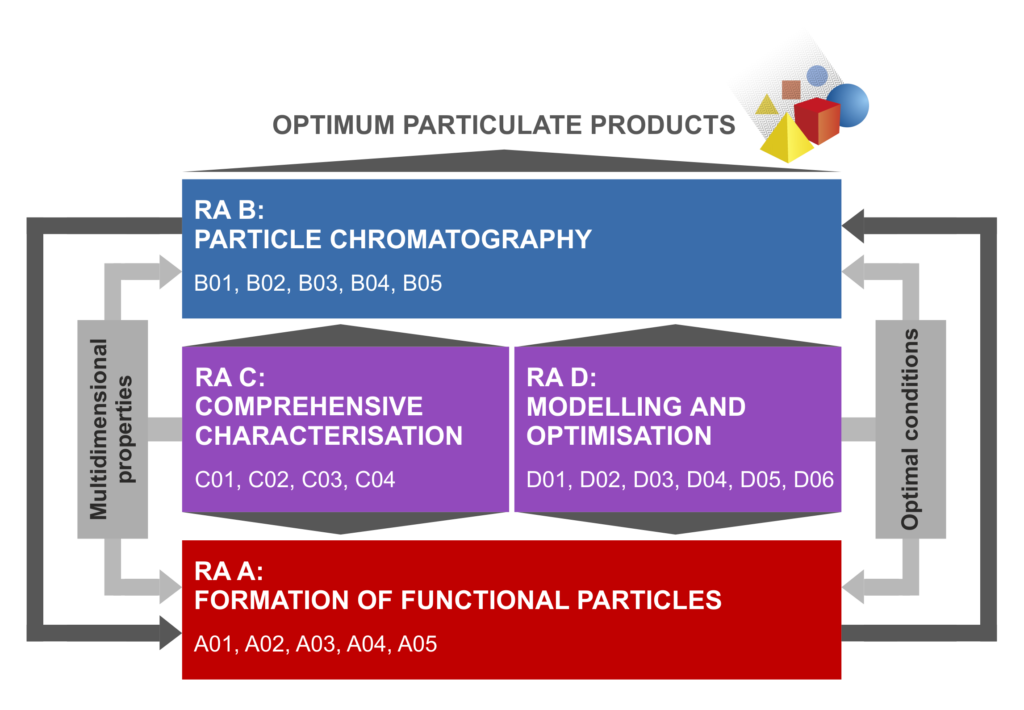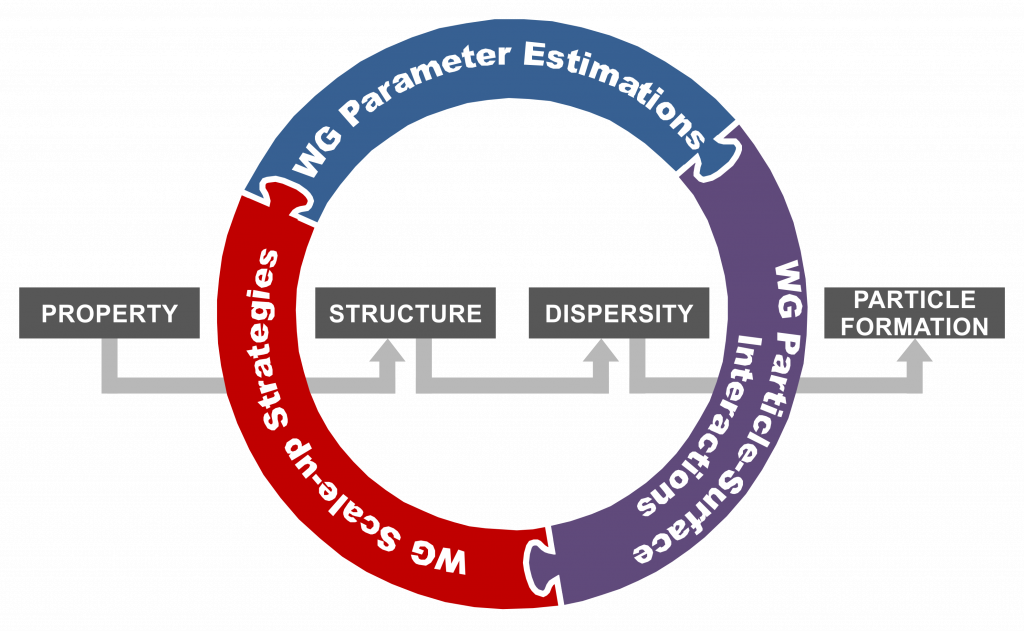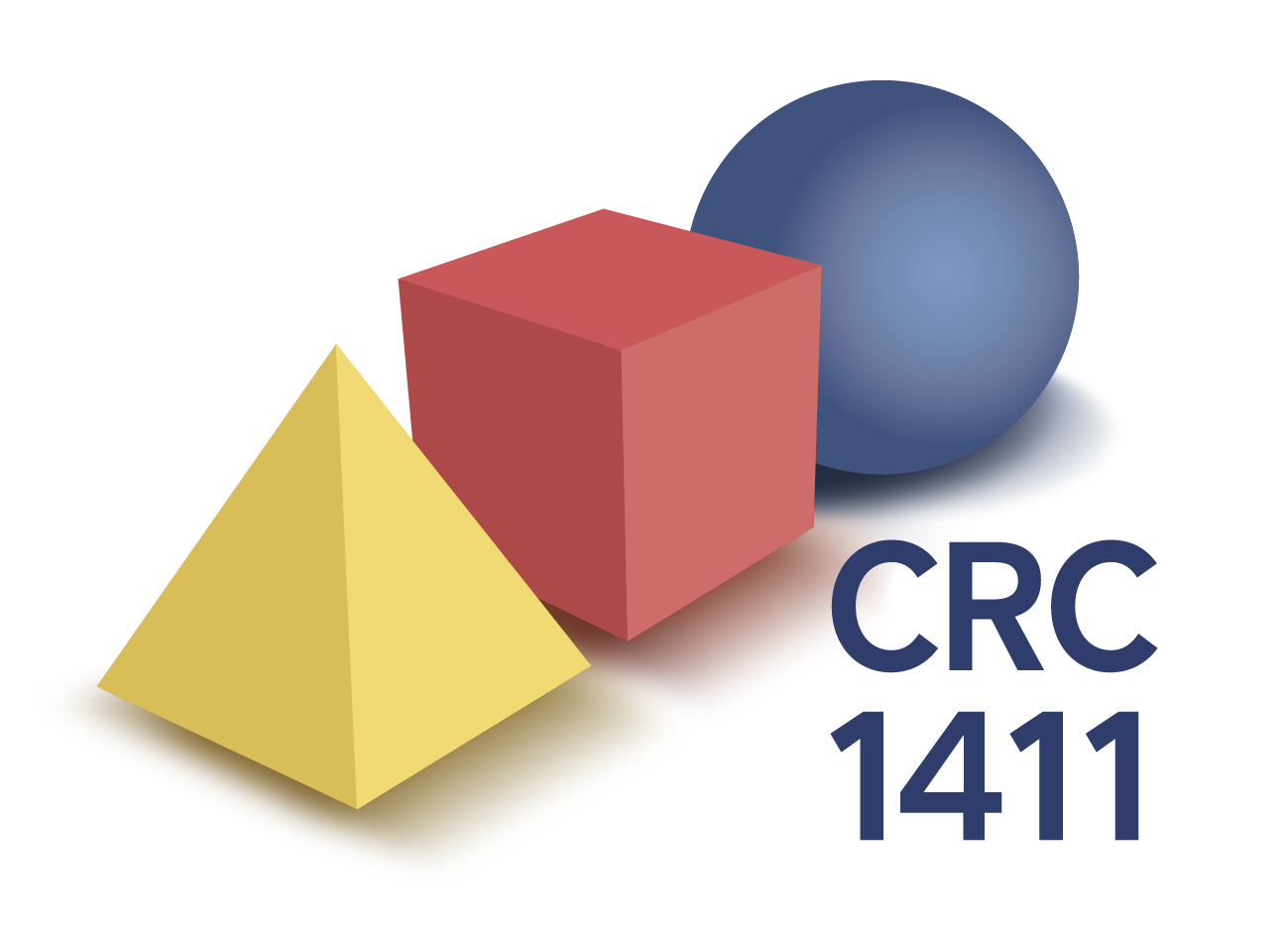Structure of the CRC
The research fields of the planned CRC are divided into four thematic and highly interlinked RAs:
- RA A will study continuous processes for NP formation and their self-assembly into well-organised optically active porous structures.
- RA B aims to develop novel SPMs and processes for NP classification with respect to size, shape and surface properties.
- RA C will employ high-end methodologies for the multidimensional characterisation of single NPs, SPMs and particle ensembles with respect to their surfaces, diffusive transport and disperse properties including size, shape as well as porosity.
- RA D will provide models for particle interactions, particle transport and self-assembly. Based on a novel framework of unified balance equations, NP synthesis and their chromatographic separation will be modelled and optimised with respect to structure-property-process functions taking uncertain conditions into account.

In order to intensify the cooperation between researchers from different disciplines, working groups on the cross-sectional topics Scale-up strategies, Particle – surface interactions and Parameter estimation will be set up to address central, interdisciplinary issues and work contents along the design chain of particulate products. Within the framework of regular meetings and lectures, results will be exchanged and discussed in order to achieve synergetic use of the gained knowledge.

